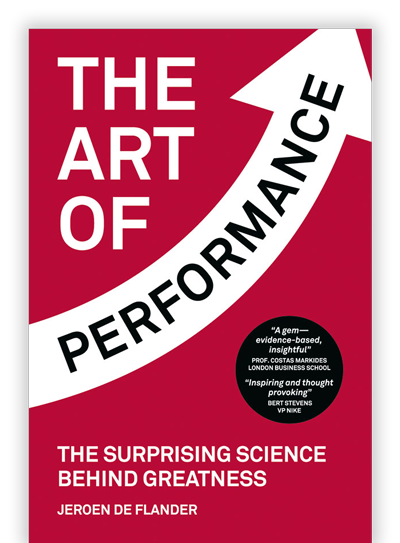Action plans: everyone tells us they are the key to success. But unfortunately, that is not true. There’s another ‘get it done’ lever that is so much more important.
To understand this rather strange idea, let’s take a look at something a famous strategist once said:
‘Strategy is a pattern in a stream of decisions’
Professor Henry Mintzberg is an internationally renowned academic. He wrote more than 150 articles and 15 books on business and management. One of Mintzberg’s insights, “Strategy is a pattern in a stream of decisions,” helps us to better understand how decisions relate to strategy.
A long time ago, when I worked at Arthur D. Little, I learned this phrase by heart—but it took me 5 years to really grasp the point of it.
The trick I use to understand Mintzberg’s cryptic statement is to approach decisions in 2 steps.
First, there’s the overall decision—the big choice—that guides all other decisions. To make a big choice, we need to decide who we focus on—our target client segment—and we need to decide how we offer unique value to the customers in our chosen segment.
That’s basic strategy stuff. But by formulating it this way, it helps us to better understand the second part, the day-to-day decisions—the small choices—that get us closer to the finish line.
When these small choices are in line with the big choice, you get a Mintzberg Pattern.
The Mintzberg Pattern
The Mintzberg Pattern is crucial to understanding successful strategy journeys.
When we think and talk about strategy journeys, we think and talk about people and the decisions they take. Successful strategy journeys follow a Mintzberg Pattern, small choices that are in line with a big choice, like wagons that follow the train engine to its destination.
At first sight, from a strategist’s point of view, the big decision seems like the tough one. But that’s not quite right.
Yes, defining a strategy is hard, but the power of small decisions—the day-to-day choices of all employees on the execution road—cannot be underestimated.
10.000 colleagues
If one person takes the wrong decision, the overall impact on the company is very limited (and surely less impactful than making the wrong strategy choice). But if 10,000 colleagues make wrong judgments about quality and cost on a daily basis, then these small decisions aren’t so small anymore.
Imagine a construction company and its relentless focus on safety. If one person doesn’t wear a helmet (a small choice), the impact on safety is limited. It’s unlikely that something would happen to that person on that day.
But if everyone at that organisation decides to wear helmets only occasionally, the accident risk increases exponentially.
Small decisions do have a big impact on the success rate of strategy journeys, not because of their individual size or importance, but because of their sheer number and exponential force.
Most of us don’t pay attention to these small decisions. And that’s mainly because we find it difficult to grasp the logarithmic effect of wrong small choices. (How much worse can it be if a few more people don’t wear a helmet?).
Brittney Gallivan of Pomona
Take 1 minute to solve the following challenge given to high school student Britney Gallivan of Pomona, California:
If you fold a piece of paper in half 50 times, how thick would the end result be?
Most of us would imagine the end result to look like a stack as big as a large phone book.
We visualize 50 pieces of paper lying on top of each other.
But the answer might surprise you.
Gallivan decided to test it. She knew she needed a big piece of paper.
After some searching, she found a 0.75-mile roll of toilet paper. With her parents, she rolled out the jumbo paper, marked the halfway point, and folded it once. It took a while because it was a long way to the end of the paper. Then she folded the paper a second time, then again and again. After 7 hours, she folded her paper for the 11th time into a skinny slab of around 31.5 inches wide and 15.75 inches high and posed for photos. In the end, she was able to fold the paper 12 times. If she could have folded it 17 times, the final stack would be taller than your average house. Three more folds and that sheet of paper would be a quarter of the way up the Burj Khalifa, the largest tower in the world. Ten more folds and it would have crossed the outer limits of the atmosphere. Another 20 and it would be about 60 million miles high, about two-thirds the distance to the Sun.
“The world was a great place when I made the twelfth fold,” Gallivan wrote when documenting her experiment. She also explained the phenomenal exponential force of repetitive small actions, known as a ‘geometrical expansion’.
This is an important lesson for us. Taking into account the sheer number and exponential force, small decisions become SMALL. And successful strategists have SMALL decisions on their radar.
A Decision Tree rather than an Action Plan
If strategy is a decision pattern, strategy execution is enabling people to create a decision pattern.
In other words, strategy execution is helping people make small choices in line with a big choice. This notion requires a big shift in the way we think about execution.
As a leader looking at strategy execution, we should imagine a decision tree rather than an action plan. Decisions patterns are at the core of successful strategy journeys, not to-do lists.
To improve execution speed and accuracy, we should shift our energy from asking people to make action plans to helping them make better decisions.
Like this article about the value of action plans?
Want to inspire others?
Share now!



